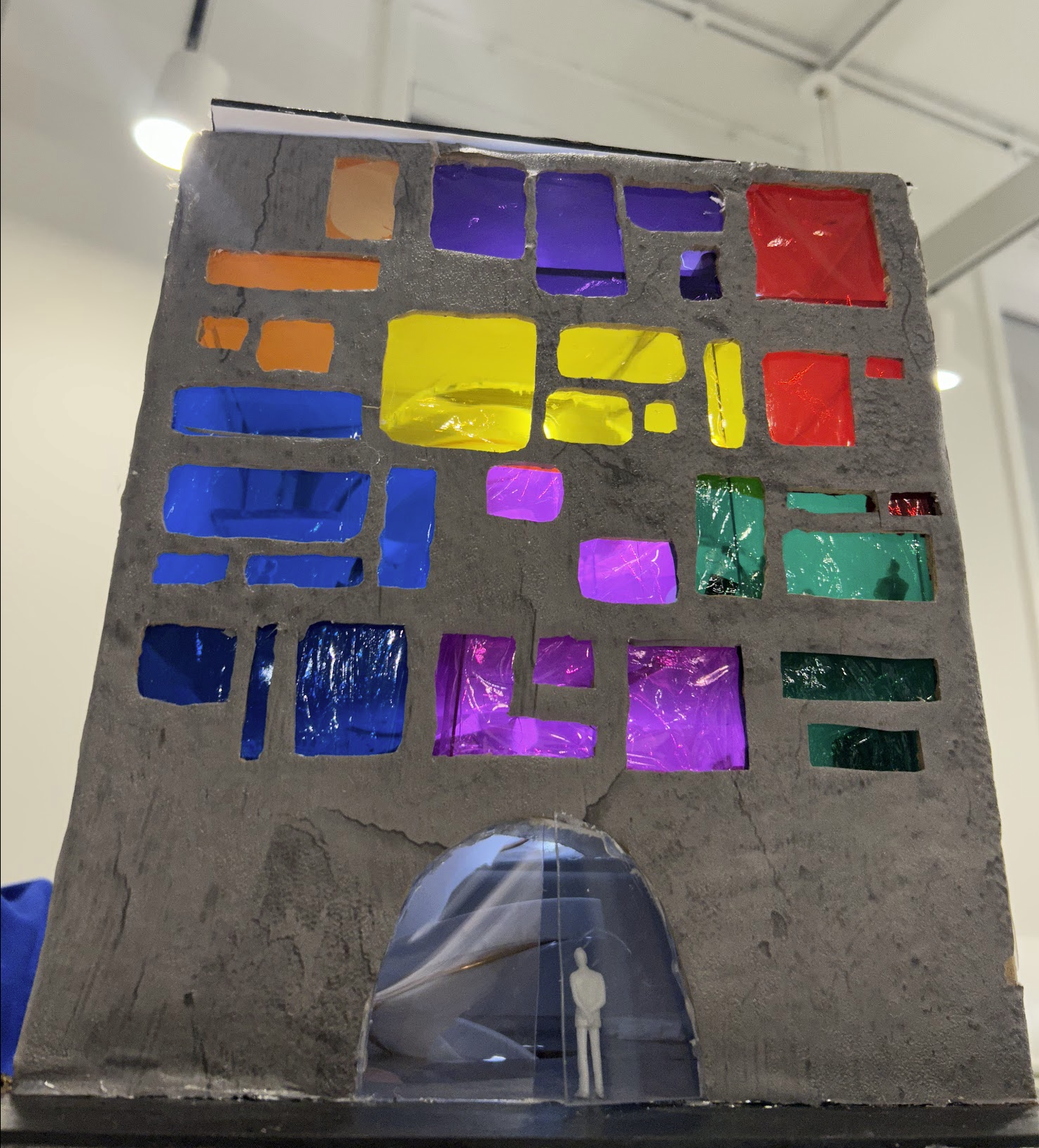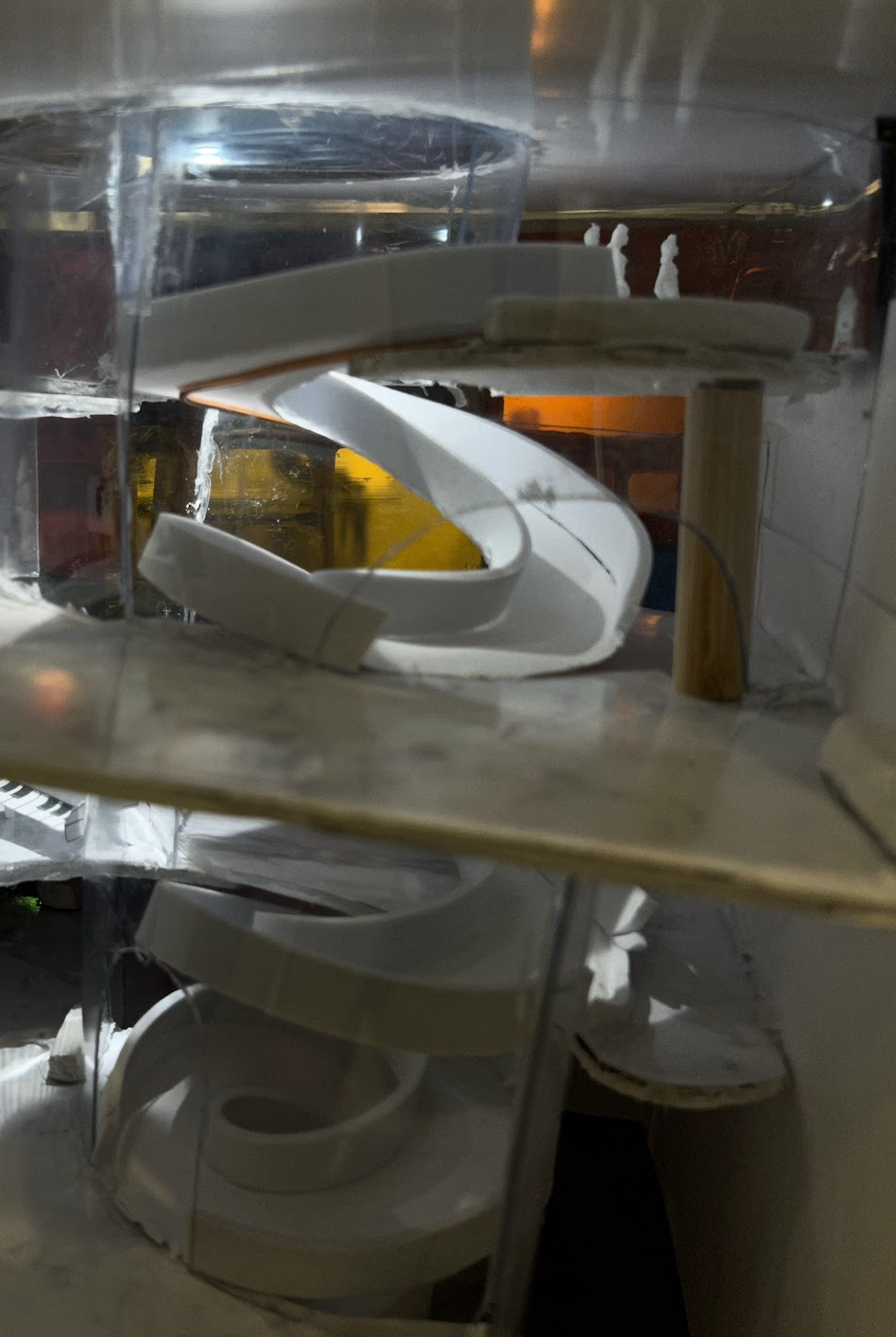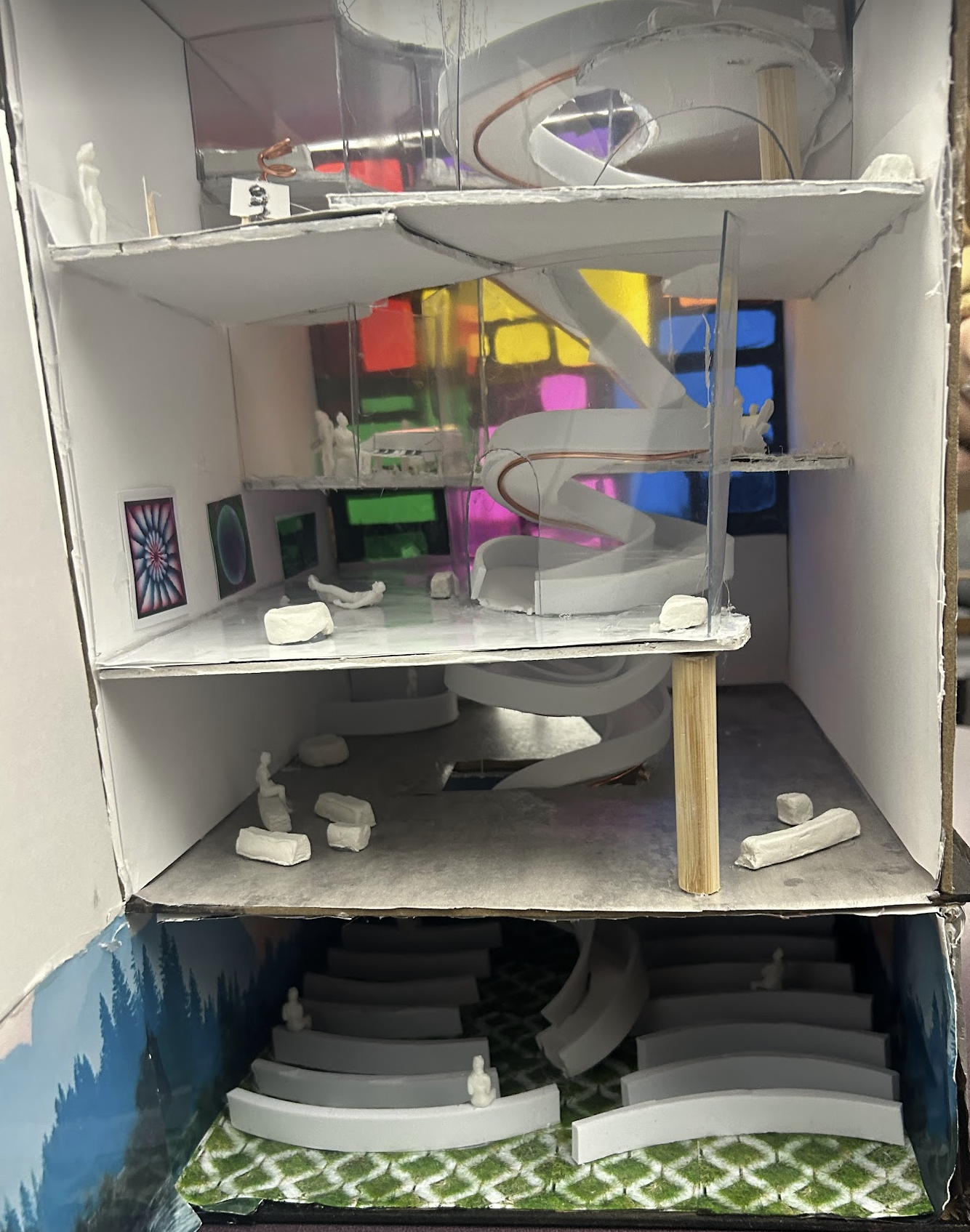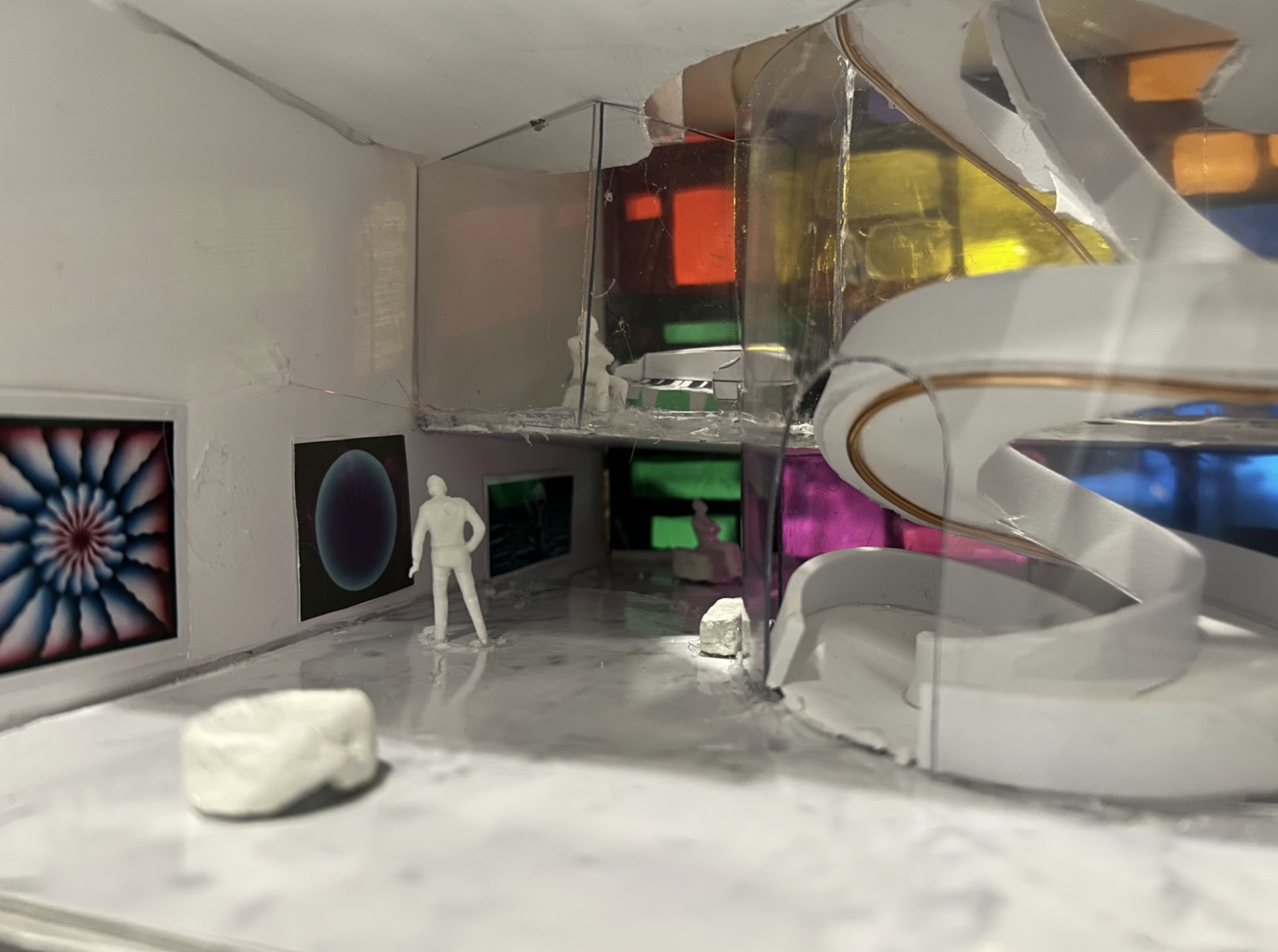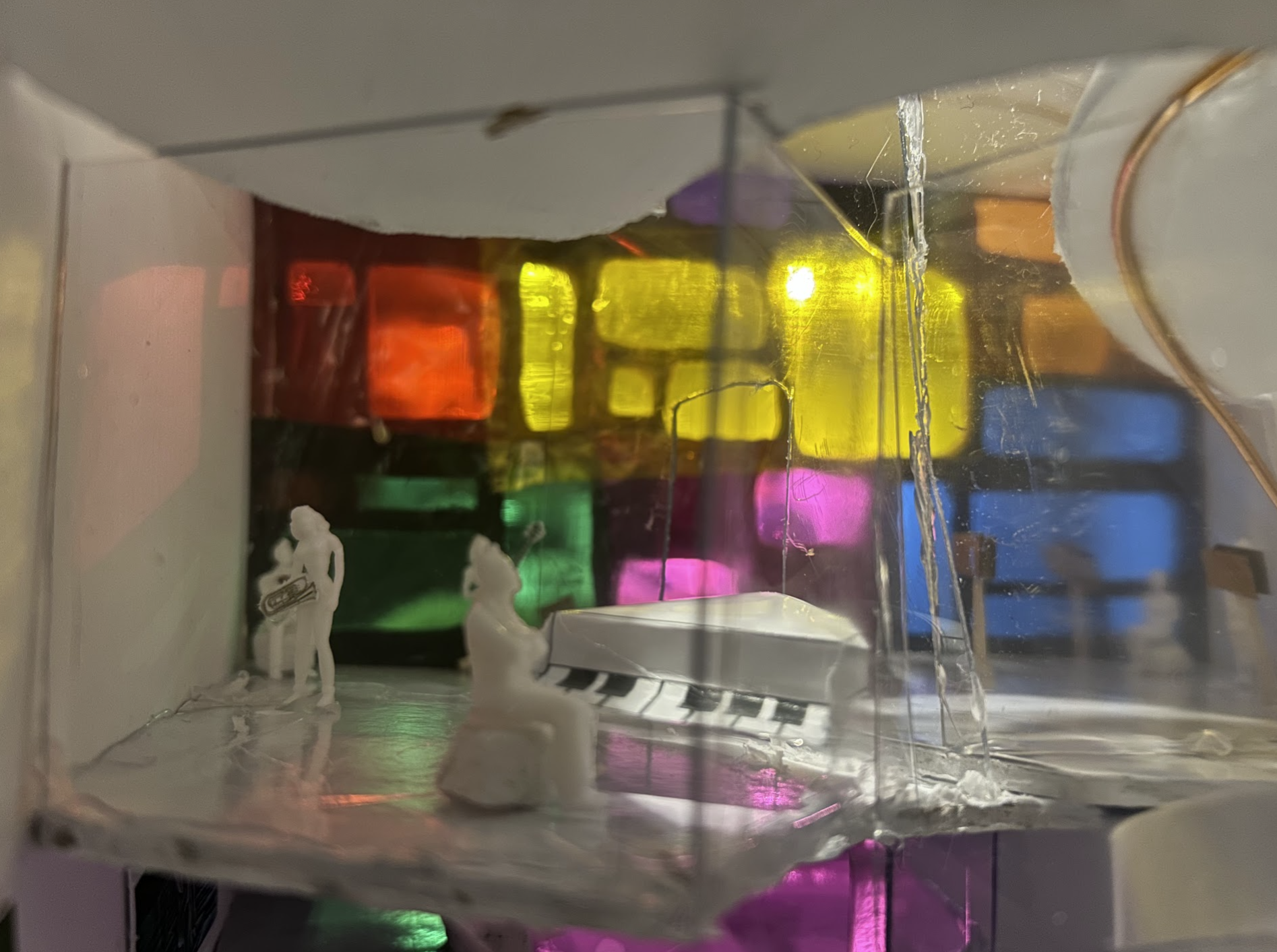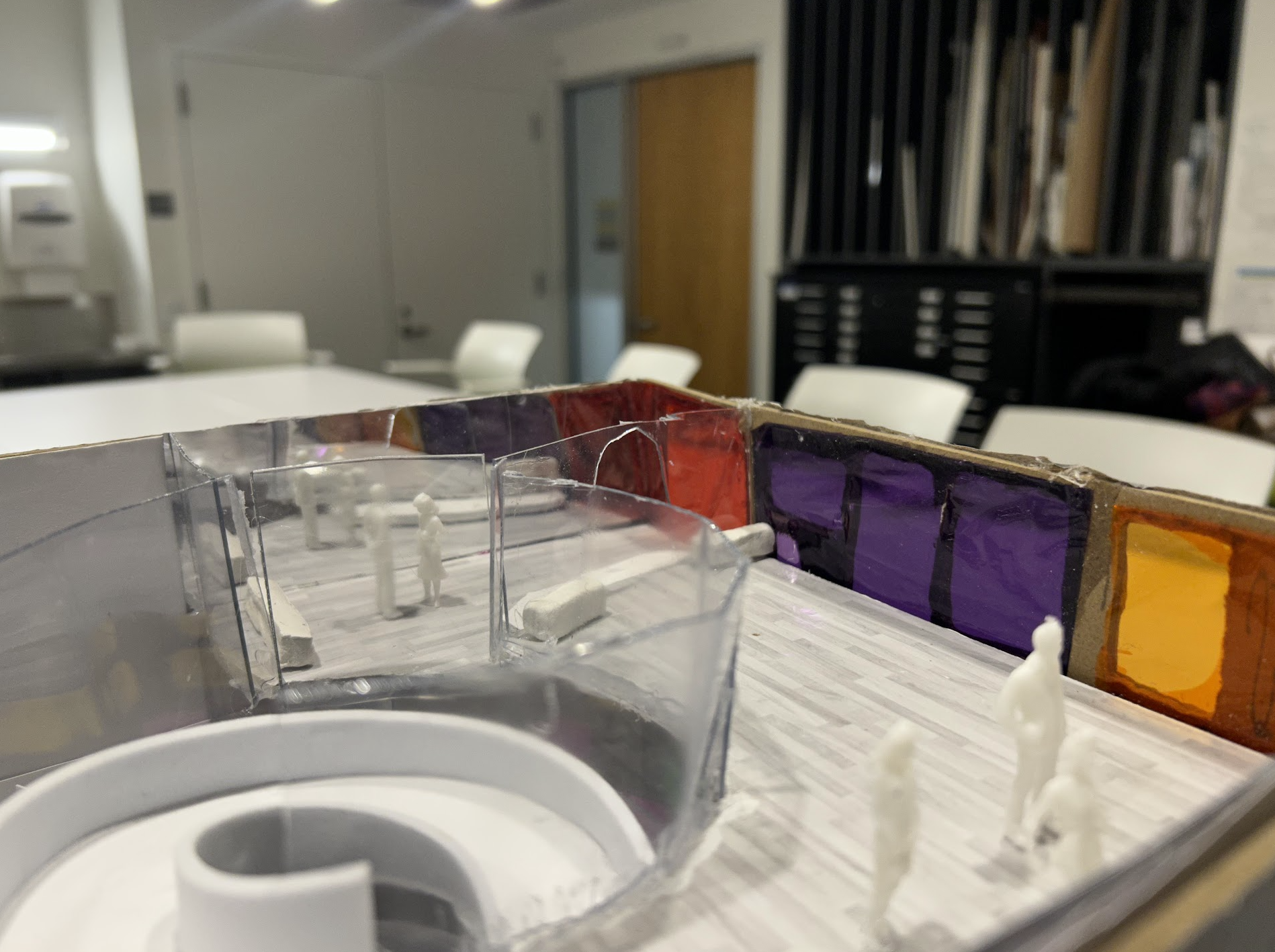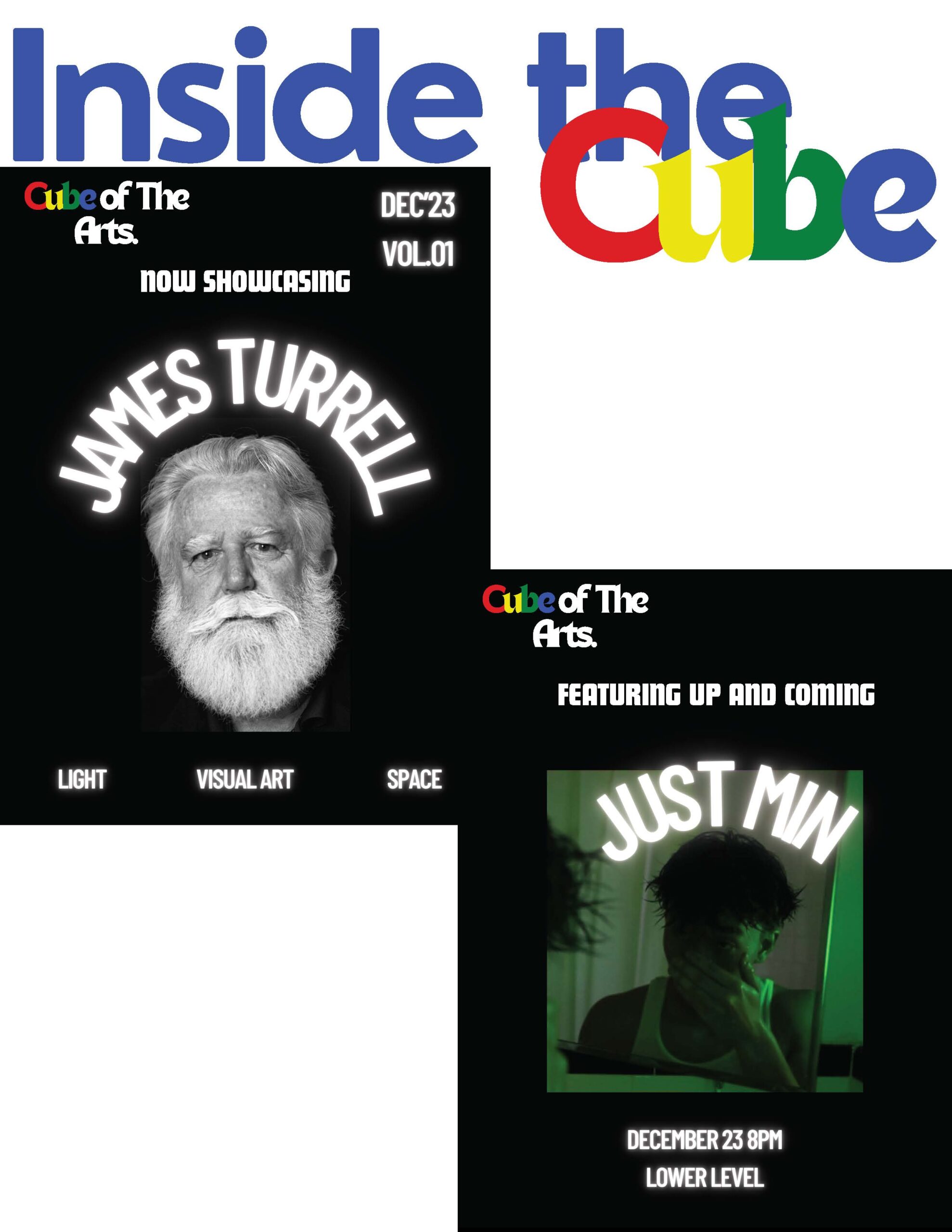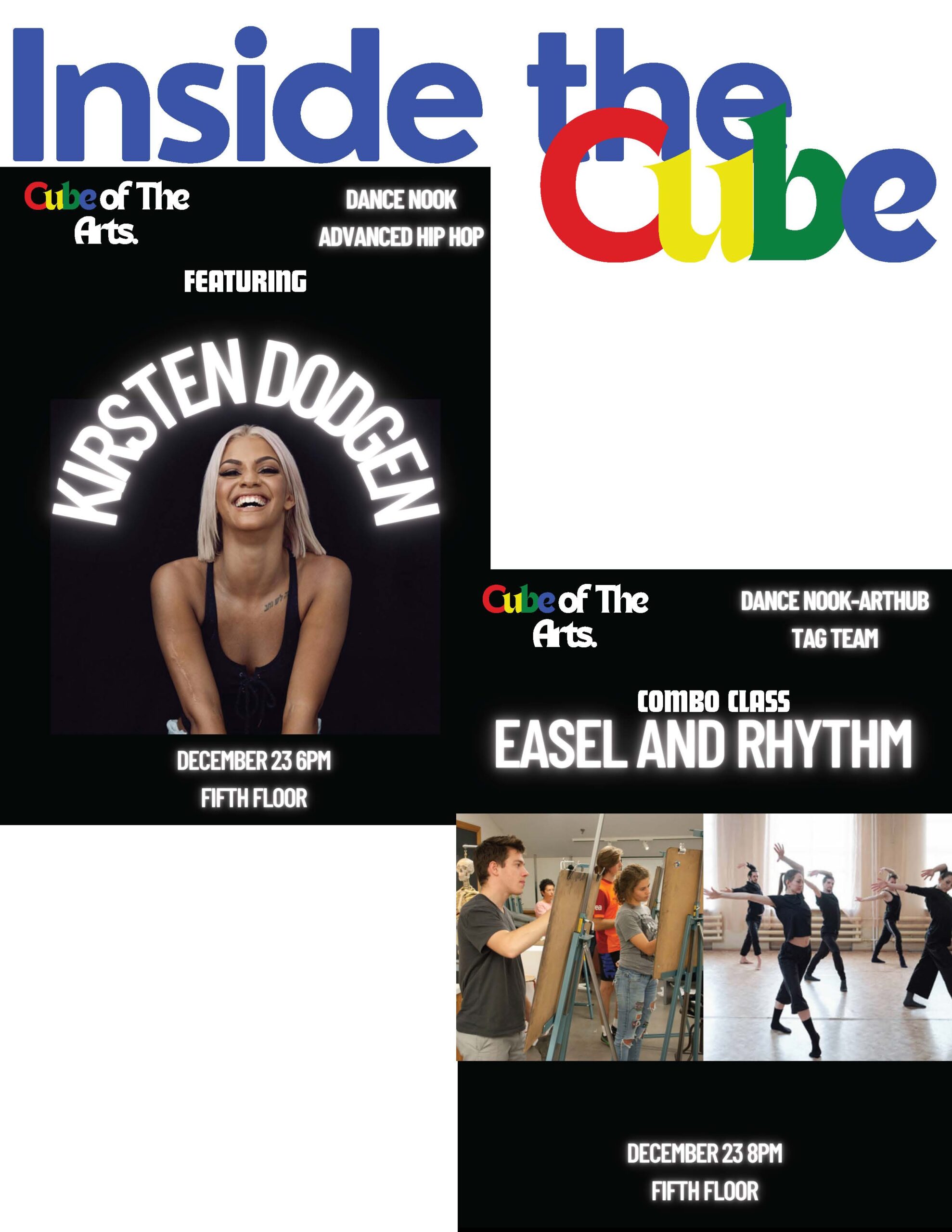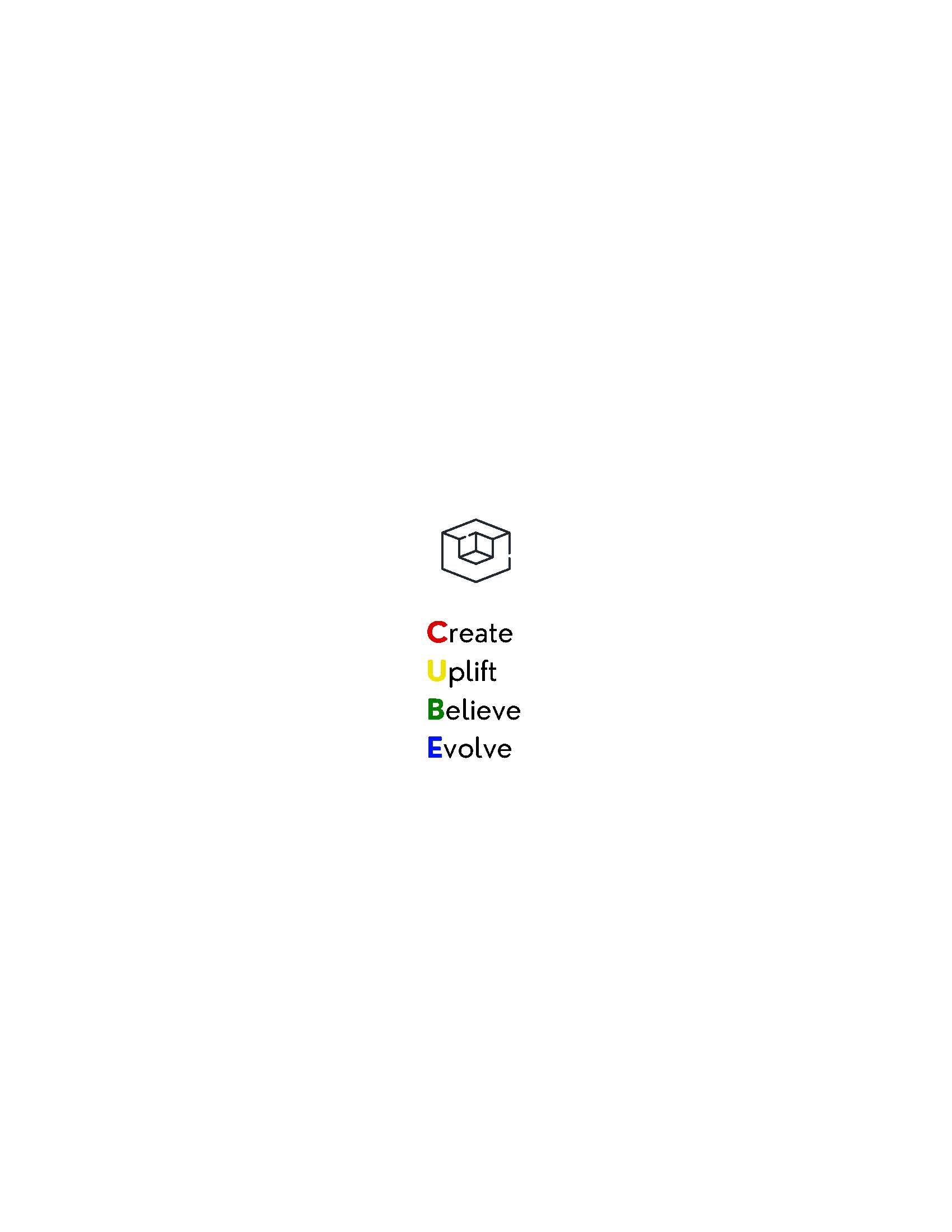The manifestation of our ideas on the physical plane need not be perfect, and it is quite a beautiful thing when we can liberate ourselves from these expectations.
Cube of The Arts
Through our experience of living in the hustle and bustle of New York City, we set out to create a space that exists as the antithesis of this culture. In a city that relentlessly prioritizes productivity, self-sufficiency, and a cut-throat environment, it can often feel isolating. The Cube of the Arts subverts this by prioritizing community engagement and the connectivity of ideas amongst different sectors of the arts. Imagination and inspiration are the foundation of The Cube’s identity.
Our building is composed of five distinct rooms, all accessible via a spiraling ramp in the center of the building, acting as the spine of the structure and interconnecting a variety of the arts. The shape of the spiral is unconventional; far from being perfectly straight, the essence of its aimless weaving and winding represents that of visitors’ journeys, not only physically to the building but also spiritually throughout their lives. The manifestation of our ideas on the physical plane need not be perfect, and it is quite a beautiful thing when we can liberate ourselves from these expectations and appreciate what is. Our building is all about subverting expectations and embracing unconventional creativity.
The Ramp is the spine of the building. Entirely white, it represents the clarity of transformation between the vibrancy taking place in the creative spaces. The lack of color on the walls represents a blank slate, not only for light to reflect on walls from the windows, thus changing the atmosphere of the building based on the climate and time of day but also to emphasize the limitless possibility of ingenuity and represent the amalgamation of all colors synthesized into one, communal shade.
The entrance of The Cube is blank, clean, and provocative; it invokes these feelings as a reflection of New York City and encourages visitors to reflect both inward and outward. The main light of the space is directed from the roof spilling into the foyer. The Foyer is a transition to the ramp; this is a central element of the building. The Foyer becomes a transitional cleansing space as this space is also the “third place.” This space acts as a decompression chamber from the city environment. The foyer also re-introduces the sense of community through how it makes the user gravitate to one source of movement throughout the building. We provided an information desk to display different events, artists, and creative opportunities The Cube holds. This information point is located at the front side of the foyer, seamlessly placed if the visitors wish to bypass and ignore it, but yet easy to access if curiosity overcomes them.
The venue in the basement is equipped to accommodate large, live performances. While our building is a center for the arts, it is specifically designed to make users feel like they have escaped the bustling streets of New York and have entered a new world. To access this part of The Cube the spiral must be used, this is prompting visitors to slow down as they descend into the venue space and admire their new surroundings. Due to the positioning of the concert venue in the basement, it is separated from the other floors by the foyer. The implementation of digital screens around the room displays natural scenery, and in combination with the grass flooring, aims to simulate an idyllic, real-world environment. The idea is to make the concert venue feel as though you are connecting with the artist by changing your surroundings alongside them, prompting a deeper connection to the experience. Digital screens allow for the projection to be changed, giving the artist freedom to reflect their mood, tone, and creative vision throughout the room. They also have the ability to include anything that could enhance their set or their set’s theme.
The second floor is a museum space. This is where users can interact with the static artistic pieces around them. The artists featured in this space are James Turrell, notable for his iconic and ephemeral play with light and space—aspects important to our narrative and reflected in the design of the building—and Judy Chicago, famous for her incredible gradient techniques and eco-feminist activism. Communal experiences, which include mutual assistance and activism, are essential to The Cube of the Arts’ purpose; connection and intimacy among individuals who feel disenfranchised are fostered by creativity in this space.
The third floor is dedicated to music, and separated into two sections: one for large group practice and connection, the other for individual practices and introspection. The facilitation of music as a communal event allows for the harmonization of sounds, as well as their discordance, or even the possibility of silence—all sounds carry different interpretations and allow visitors to delve deeper into their inner worlds.
The purpose of the fourth floor is to create art through a multitude of mediums. Here, visitors are encouraged to play with the messy viscera of life. Liberated from expectations of perfection or cleanliness, this space is all about embracing vulnerability and inconsistency. The manifestation of this mindset not only results in the abstraction of beauty but also irrevocably intertwines the creator with the creation. The lack of clear-cut dimensions blends each artwork into the next, fostering a communal experience where each person builds off another’s piece, and the artworks continue to evolve in unity, juxtaposed by the incongruency of each work.
The top floor is committed to movement and dance. Visitors are encouraged to let loose, both physically and mentally, through the meditative experience of synchronizing one’s body with music. Everyone’s style shines through the movement of their physical form, while simultaneously amalgamating together to form a jumble of limbs moving to the sound. The circular window on the ceiling of the building allows the center of the room, as well as the spiral ramp, to be illuminated by sunlight or moonlight. Conversely, it also allows users to peer into the sky, for a couple of moments forgetting about their worries that reside in the city down below, gazing up into the limitlessness of the sky. Mindful movement not only connects us to our body, it connects us to the frequency and vibrations of the sound and the universe that encompasses us.
The narrative of the building is to create a structure in a city landscape that simultaneously blends with the surroundings, yet still appears distinctive from the outside facade to the inside. When you walk in, it guides you to the main focal point, which is the spiral ramp. This ramp serves as the primary structure for all floors. Through this ramp, there is an inner connectivity between these creative spaces, as the arts and devotion to the space have become less of a focal point in our society. Our building supports this world of creativity.
The windows are stained-colored glass, providing a magical feeling as light passes through these oddly shaped and colored windows. The creative spaces are uniquely designed to match the utility of the room and the overall atmosphere that these curved walls create. Through the curvature of some aspects of the walls, these spaces make the user feel connected to the building, those around them, and themselves. By having fewer angular corners, we can connect these spaces and foster softness and connectivity. These rooms have glass inner walls, making the separations between the spaces subtle yet tangible. Through these translucent walls, we foster a feeling of connectivity as the floors and spaces share them. Users can easily observe what is going on at several points within the building and are encouraged to explore and be inspired by their talented counterparts. The irregular floor plate size is intended to break connectivity and challenge expectations from a normal NYC building. The floors in The Cube are not symmetric and do not hold a pattern. They are organic as artistic creation ought to be. The floors are encased in curved pieces of glass that add a sense of transparency and rawness to the artistic process. This building is designed to feel like you have entered a portal away from the fast-paced city and into a world where it’s encouraged to ponder, think, and walk slowly, as those are luxuries that are hard to attain.

